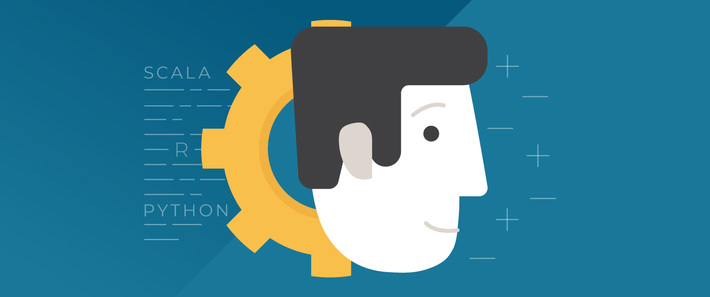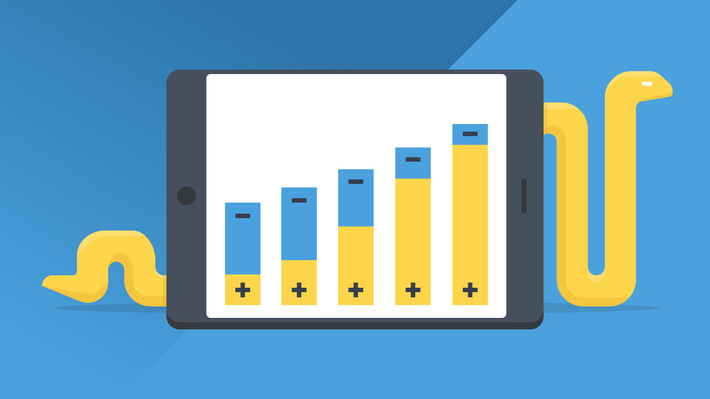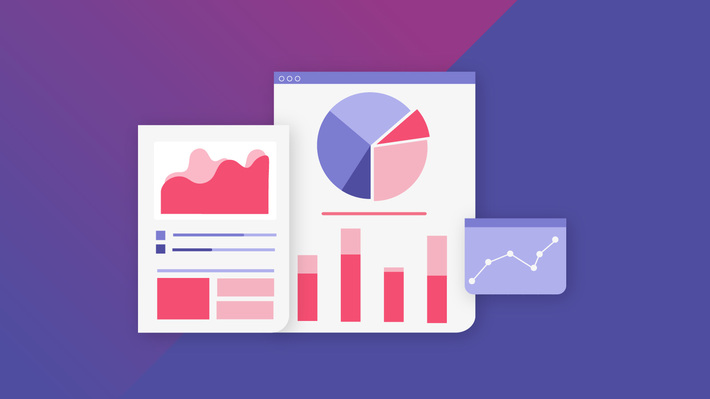
Programming languages are a tool for the realization of many powerful data science applications. But, there are so many of them and it has become confusing to choose the optimal one for your specific project. In this article, we are going to talk about popular languages for Data Science and briefly describe each of them.
Programming languages
Python
Python is a modern, general-purpose, high-level, dynamic programming language. It can be used for integrating with web apps or incorporate statistics code into a production database. There are a lot of libraries, which can be used for analysis.
Pros:
-
Python is easy to learn. It has a short learning curve and an easy-to-understand syntax. Also, it reduces the number of code lines compared to other programming languages.
-
Python is a multi-purpose language. It allows integrating with every part of your workflow.
-
Python is an open-source with an active community. It’s not only free to use but also Python programmers community is numerous and you can feel free to ask.
-
Python is cross-platform. It gives the ability to run on many operating systems.
Cons:
-
Python visualizations are usually convoluted. Python has some notable visualization libraries, but the results sometimes wished to be better as they are not pleasant to the eye.
-
Python has less functional than R, however, Python is more object-oriented.
R is a programming language that was created for statistical analysis. That’s why it is cutting-edge in data science. We can extend the functionality of the base R language by software libraries called packages. The most popular package repository is the Comprehensive R Archive Network (CRAN). Now, it contains over 10,000 packages that are published.
Pros:
-
R is open-source software. Consequently, anyone can use it without buying a license and change it.
-
R is cross-platform. It gives the ability to run on many operating systems.
-
R provides a visualization of data through different charts types.
-
R is developed by statisticians for statisticians. There is no need to have experience in computer science to get started.
Cons:
-
R has pure memory management, so R can consume all the available memory.
-
R is slow. However, are developed multiple packages to improve R’s performance.
-
R has no built-in security. R can’t be used as a back-end server to do calculations as it is lacking in security over the Web.

Scala
Scala is well-known as a scalable language. It combines object-oriented languages and functional languages features. The Scala has amazing concurrency support, which is fundamental in parallelizing a lot of the processes which large datasets demand.
Pros:
-
Scala is free, so you don’t need a license.
-
Scala is highly functional in paradigm. Scala handles its functions as a first-class citizen. In other words, functions can be as arguments to other functions, returned as values, assigned to variables and stored in data structures.
-
Scala has a high run speed. Scala is 10 times faster than Python due to JVM.
-
Scala is multi-paradigmatic. Scala is both object-oriented and functional.
Cons:
-
Scala has a precipitous learning curve. It’s hard to adjust to the syntax and type system as it is considered to be difficult.
-
Scala has a bounded developer pool. It is not a big deal to find Java developers but not everyone can code efficiently in Scala.
-
Scala has no true tail-recursive optimization due to running on the JVM.
Julia
Julia is a high-level, high-performance dynamic programming language for numerical computing. Sophisticated compiler, numerical accuracy, distributed parallel execution, and an extensive mathematical function library make Julia popular for data science. Its Base library is mostly written in Julia itself.
Pros:
-
Julia is free, so you don’t need a license.
-
Julia is compiled but not interpreted. Consequently, it wins in speed.
-
Julia can be used not only for numerical analysis. It can be used as a general-purpose programming.
-
Julia code can be combined with other language libraries written in Python, C, and Fortran. Moreover, we can interface with Python code by PyCall library and share data between Python and Julia.
-
Julia can provide metaprogramming. Its programs can produce other Julia programs and moreover modify their own code.
Cons:
-
Julia is not properly developed. Due to its recent entry, there is a need for improvements. Julia’s tools are not as fluid and reliable as they wished to be.
-
Julia has a limited number of packages because it is young and their community is pretty small. Unlike R and Python, Julia doesn’t have such a variety of packages.
- Julia can’t identify issues. Julia is far behind from Python and R in terms of identifying issues and debugging tools. But soon more tools were expected to be developed for users.
Matlab
Matlab is well-known as numerical computing language which can be used both in educational and industrial purposes. Matlab can solve problems in multiple disciplines, such as product optimization design, spectrum and time series analysis of data, signal process, statistical data analysis and model formulation, and image processing.
Pros:
-
Matlab suits quantitative applications with advanced mathematics such as signal processing, Fourier transforms, matrix algebra and image processing.
-
Matlab has excellent inbuilt visualization.
-
Matlab often becomes a part of undergraduate courses such as Applied Mathematics, Engineering, and Physics. That’s why it is popularly used in these fields.
-
Matlab has interaction with 3rd party software. For example Simulink, CarSim, PreScan.
Cons:
-
Matlab requires a license. But there are free alternatives available such as Octave.
-
Matlab cannot be used for general-purpose programming.
-
Matlab takes much memory of a computer when processing data. So if you have a large dataset is slows the computational speed.
Octave
Octave is a high-level programming language for numerical computations. It helps to solve linear and nonlinear problems numerically and to perform other tasks by using language that is practically similar to MATLAB. Octave is one of the major free alternatives to MATLAB. Octave uses an interpreter to execute the Octave scripting language.
Pros:
-
Octave is free, so you don’t need a license.
-
Octave combines both a Graphical User Interface (GUI) and Command Line Interface (CLI).
-
Octave suits for tasks of applied mathematics, statistics, etc.
Cons:
-
Octave cannot be used for general-purpose programming.
-
If you want to run your code from Matlab in Octave, some functions may differ.
-
Octave takes much RAM and memory of a computer when processing data. So if you have a large dataset is slows the computational speed.
Conclusion
All in all. it’s up to you to choose a programming language. Our advice is to think about the purpose of your application, whether you plan future integration, etc. After that, you can choose the most suitable option.

